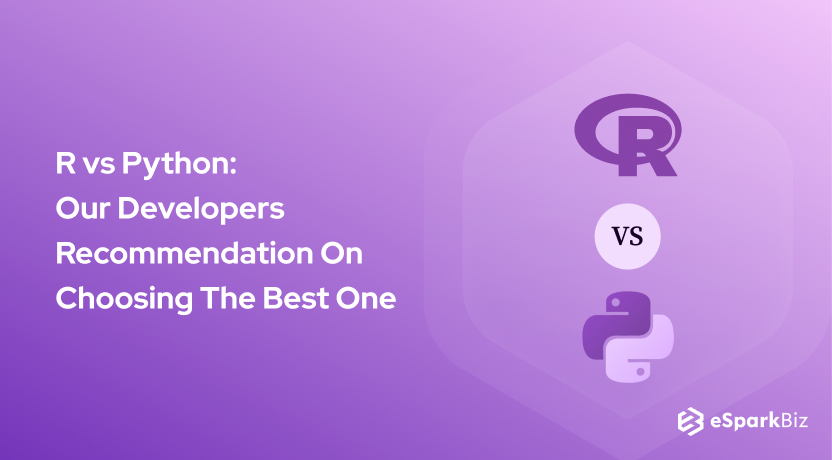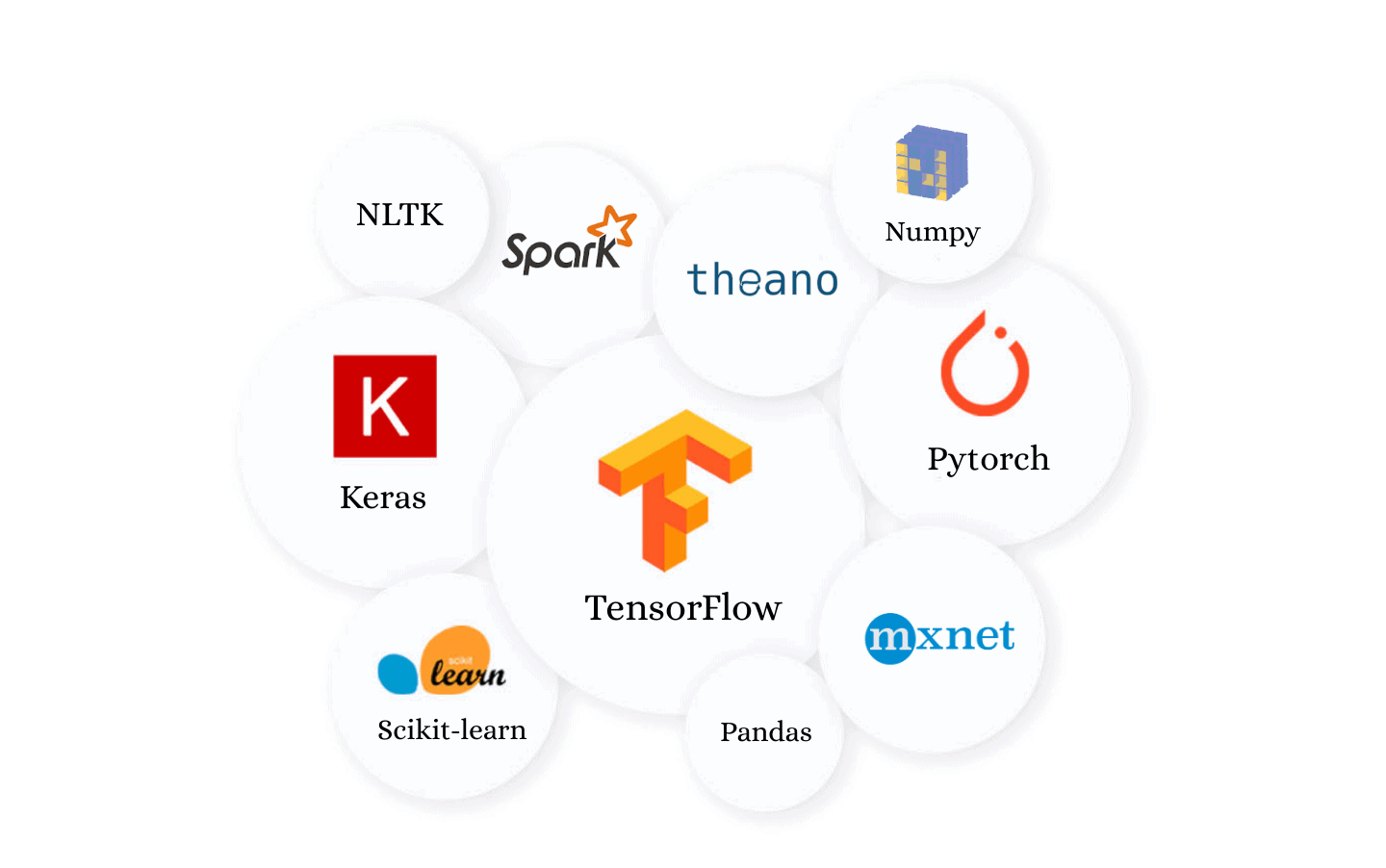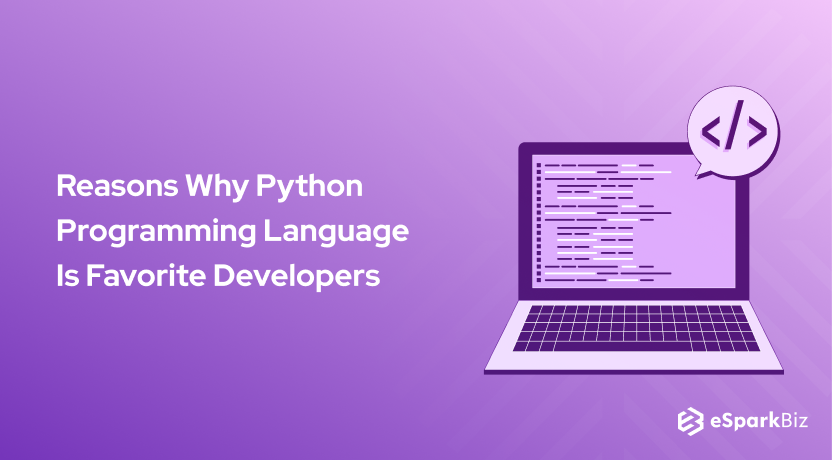Technology is an essential building block upon which the modern world is constructed. Within this bubble of technology and innovation, data science is an evolving segment. Today, we will talk about Python vs R which is the two most preferred languages for Data Science.
Choosing the right programming language, therefore, becomes increasingly important especially for start-up firms. Every independent business organization operates in a specific way to fulfill diverse long term goals.
R and Python are among the best programming languages in the data science industry. Our Developers have hands-on experience on working with both these technologies and have shared their expert opinion in this article to guide you for choosing the Best Fit for your development need.
The R vs Python debate has been raging for years. Both the applications are open-source languages that are known for their optimum services. It is also important for businesses that are confused whether to hire python coders or R coder.
The teams managing R and Python make sure to drop regular updates so that the programming language can keep up with the present needs of modern corporations.
Overview of Python
What is Python?
Python is the most relevant and popular programming language that is currently dominating the data science industry. The application was developed in the early 1990s and is now preferred by multinational organizations that include giants such as Google, Instagram, and YouTube.
Given its portfolio, IT businesses all over the world use Python. Development groups also use this for collaboration purposes. Python is known for its adaptable, multi-purpose nature.

Pros and Cons of Python
Pros
General use: Python goes past just measurements. You can do assortment assignments including structuring an incredible website!
Great Integration: Irrespective of the language used, for example, C, C++, or Java, Python seamlessly incorporates it. It fits every mechanical environment. Web app Developers can effortlessly create a python-based stack and fuse it.
Several libraries available: There are countless libraries on the munging, gathering, and controlling of information in Python. For example, the bundle Pandas gives developers data examination tools and structures that reduce improvement time.
Increases productivity: The syntax is straightforward to implement. This is what makes it unique and ensures higher productivity.
Simple to learn: The learning curve of this tool is smooth. Python is easily accessible and hardly takes any time to learn. Finding a Python-skilled developer doesn’t take very long.
Cons
Lack of statistical models: There aren’t many models providing in-depth statistical analysis.
Strict Global Interpreter Lock (GIL): Due to the GIL, threading is tough. Multi-threaded applications work more gradually than single-threaded ones.
When to use Python?
Choose Python if your task requires a flexible, multi-reason programming language. It is preferred by an enormous network of engineers, making extendable AI bundles.
Python’s Machine Learning & Data Analytics Packages
Python has bundles that enhance its AI property. We should investigate the bundles it offers before making the final decision.
PyBrain is a measured AI library that contains natural and adaptable calculations. It likewise gives an assortment of conditions that allows you to test and measure your AI calculations.
The most mainstream AI library Python brings to the table is Scikit-learn. NumPy and SciPy structure the establishment of this library. These apparatuses are intended for information mining and investigation.
Pandas, as explained earlier, are an extraordinary bundle. It contains superior structures and information examination devices.
Sometimes you don’t have to choose R or Python for machine learning. You can use RPy2 and get the R required.
Overview of R
What is R?
R programming language uses mathematical computations as a base for its analysis and machine learning. Statisticians established this feature to allow developers to track the statistics in the syntax.
R’s statistical approach gives developers an idea of underlying details. This software is better understood by those who recognize mathematical computations.
Pros and Cons of R programming language
Pros
Numerous libraries accessible: Like Python, R has several libraries improving the performance of AI projects.
Exceptional for information analysis projects: R is incredible for those undertakings with information examination or representation at their center. Working with datasets, R helps in structuring AI models and permits prototyping.
More exploration: If you are simply starting your venture, R is for you. It lets you compose a couple of lines of code to completely investigate the factual models.
Cons
Hard to learn: The expectation to learn and adapt to this tool is steep. This challenging language is better designed for statisticians, making it rare to find an expert.
Inconsistent with third-parties: Third-party calculations cause numerous irregularities inside R. Each new calculation requires a comprehension of the various approaches to foresee and demonstrate information.
When to use R?
R programming language is perfect for statistic-heavy projects. Regarding the narrow problems in innovative projects, R helps with the one-time dive into the dataset. R is great for tasks such as the deconstruction of paragraphs for pattern identification.
R’s Machine Learning & Data Analytics Packages
Nnet improves R’s capacity to effortlessly display neural systems. Caret reinforces R’s AI capacities also. Caret offers a lot of capacities that build the proficiency of prescient model creation.
With data analysis as the main focus, the presence of several bundles helps to improve this aspect. Bundles for various phases of information investigation are accessible. These incorporate assignments including data visualization, consistent regression, and model approval.
Python vs R: Comparison Table
| Parameter | R | Python |
|---|---|---|
| Objective | Information analysis and insights | Arrangement and creation |
| Main Users | Researcher and R&D | Software engineers and designers |
| Adaptability | Simple to utilize an available library | Simple to build new models without any preparation. I.e., framework calculation and advancement |
| Learning curve | Troublesome at the start | Direct and smooth |
| Prevalence of Programming Language. Rate change | 4.23% in 2018 | 21.69% in 2018 |
| Salary on Average | $99,000 | $100,000 |
| Integration | Runs locally | Well-integrated with app |
| Task | Simple to get primary outcomes | Great to convey calculation |
| Database size | Can handle gigantic size | Can handle gigantic size |
| IDE | Operates on Rstudio | Operates on Ipthon Notebook and Spyder |
| Significant Packages and library | ggplot2, caret, tydiverse, and zoo | TensorFlow, scipy, scikit-learn, pandas, and caret |
| Detriments | It’s slow with a high learning curve. Dependencies between library | Doesn’t have as many libraries as R |
| Advantages |
|
|
Python vs R: Choosing Best For Data Science & Machine Learning in 2024
Criterion #1: Libraries
Packages for coders in Python include pandas, scikit-learn, matplotlib, and statsmodels. For non-coders, orange canvas 3.0 is popular.
R programming language has packages for coders and non-coders as well. For coders, there is plyr, data table, stringr, zoo, lattice, caret, etc. For non-coders, rattle, R Commander, and Deducer. It has over 10,000 packages available.
So, in the race of R vs Python for Machine Learning, R has more packages available and is better than Python in this.
Criterion #2: Integration
Python coordinates low-level languages, for example, C, C++, and Java consistently into a task domain. Likewise, a Python-based stack can, without much of a stretch, coordinate the work into creation.
R programming language then again contains irregularities while coordinating outsider calculations.
Therefore, in the battle for Python vs R Machine Learning in terms of integration with Python is the best integrator.
Criterion #3: Productivity
Python is a lightweight, quick, simple to-utilize paired arrangement for document types. The coding structure is exceptionally lucid like other programming dialects, while the syntax of R is unique.
R contains a non-standard linguistic structure which is hard to read by all. This risks the dangers of interruptions in the programming procedure.
In this way, Python guarantees higher profitability.
Criterion #4: Speed
R has significantly reduced the struggle with enormous calculations, such as nxn matrix multiplications. Presently serious computational activities are written in C which is swift.
Being an elevated level language Python is moderate against R regarding speed.
So, when you compare R vs Python for Data Science in terms of speed, R wins the race handsomely.
Criterion #5: Popularity
In 2020, the popularity percentage of Python was 29.9%.
Compared to R, it is not that much popular.
So, Python is comparatively the more popular choice.
Criterion #6: Job Opportunity
Python is a more in-demand tool and rakes in an average income of $100 K.
R on the other hand rakes in an average of $99 K and isn’t that popularly used.
There are more job opportunities in Python.
Criterion #7: Usability
Python is mostly preferred by engineers. With straightforward linguistic structure, coding and troubleshooting becomes simpler. Useful pieces are comparatively composed in Python.
Individuals with no coding experience discover R simpler to utilize. Measurable models can be composed effectively in only a couple of lines.
However, Python has better convenience.
Criterion #8: Ecosystem
With a vigorous environment, Python is incredible for building information science pipelines. It is anything but difficult to utilize and peruse also.
R has a rich biological system of forefront interface bundles accessible to convey open-source dialects. Bundles can be handily incorporated into R with one line.
In this case, both applications offer equal convenience.
Criterion #9: Flexibility
Python is adaptable for new and inventive activities.
It is anything but difficult to employ composite capacities in R.
However, Python is increasingly adaptable.
Criterion #10: Ease of Learning
Python is basic and simple to utilize when it comes to programming. Its prominence is likewise because it is so natural to learn.
R is progressively hard to comprehend. It has a lofty expectation to absorb information.
Python is better here.
Criterion #11: IDE
There are several Python IDEs available including Jupyter Notebooks and Spyder.
There is only one R IDE which is RStudio. This is available in two formats: on the local desktop and web server.
Thus, Python should be preferred on the grounds of IDE.
Criterion #12: Data Collection
Python underpins a wide range of various information designs. All the data can be imported from Excel or CSV into R. Documents operating on Minitab or SPSS organization can be transformed into R information outlines too.
While R probably won’t be as adaptable at snatching online data as is Python. It can deal with information from regular sources.
Therefore, on the parameters of Data Collection Python should be preferred.
Read also: Exploring The Pros & Cons of Python Web Development
Criterion #13: Data Exploration
With pandas, Python can handle any amount of data and lag. It can filter data easily and also sort it out within just a few seconds.
R provides general analytics, machine learning, optimization, and signal processing functions.
Python is broader in data exploration.
Criterion #14: Data Modeling
You can initiate all calculations and numerical analyses within Python.
With R, users might have to depend on external packages to fulfill data modeling functions.
Thus, Python is better in this case.
Criterion #15: Data Visualization
Python generates basic graphs and charts automatically and can produce advanced ones with its packages.
R also provides basic graphs, not advanced ones along with statistical analysis.
You can download the graphs and charts on R easily. Python has a larger scope, however.
Criterion #16: Learning Curve
The learning curve for Python is smooth compared to R.
R has a steep learning curve.
Python is easier to learn and implement.
Criterion #17: Parallel Computation
The base variants of R as well as Python offer help in the form of multicore calculations.
It makes them equal with regards to parallel computation in R vs Python.
Conclusion
When it comes to machine learning R vs Python is a tough decision to make. With all the data given nonetheless, it shouldn’t be as troublesome. Survey the necessities of your task completely. Doing so encourages you to pick the correct tool!
We hope you had a great time reading this article and it proves to be a great help for any Top Python Web Development Company. Thank You.!
-
Which Is Better For Finance: R or Python?
When you’re dealing with the financial data, data science comes into the picture. Now, for data science, Python is a more suitable option compared to R. The reason behind that is, it provides you with flexibility & more options.
-
Which Is More Popular: R or Python?
The simple answer to this question would be Python. Python has a wide range of scope compared to R. So, Python is more popular than R.
-
Should I Learn R or Python?
According to the experts, you should learn both the programming languages. Investing time in both these will provide you a great return.
-
Which Is Better For Machine Learning: R or Python?
R has a better community for data exploration. It also has the capability to handle data visualization in a better manner than Python. Python has become better at handling such queries. But, overall, R stands out in this scenario.
-
Which Is Faster: R or Python?
Python is much faster compared to R in terms of speed and performance. Generally, when you’re dealing with fewer iterations, people choose Python. But, if you’re doing more iterations, R may come handy.
-
Is R A Dying Language?
To some extent, this is true. As per the experts, Python is playing a major role in the decline of R. It is providing a better alternative to R.









